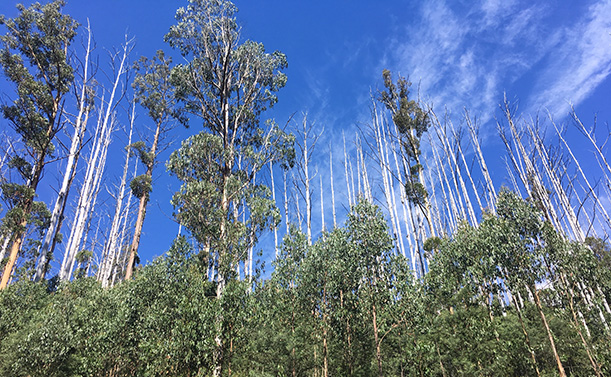BOOMbox at Home: Wildfires
May 6, 2021

During spring, we're exploring the four elements of earth, air, fire, and water. This week, we’re exploring the natural disaster of wildfires.
What causes natural disasters? How often do they occur? What roles do air, water, land, and fire play in these natural events? Read on to learn the answers to these questions, fun activities you might try at home, and inspiring career pathways.
Before delving into the details of natural disasters, let’s take a moment to define this term. Natural disasters are events that may have geophysical, climatological, hydrological, or biological origins (as described by the International Federation of Red Cross and Red Crescent Societies). Watch a brief introduction to the science of natural disasters. Examples are earthquakes (geophysical), floods (hydrological), wildfires (climatological), and epidemics (biological).
The Basics of Wildfires
Let’s start with the ingredients of fire: fuel, heat, and oxygen. What we commonly refer to as “air” is a key requirement for fire. Given that 20% of our atmosphere is oxygen, it is readily available.
What about the other two ingredients? Well, the source of heat could be caused by humans or weather conditions (drought, lightening). Humans also play a role in how climatological conditions evolve. The third ingredient is fuel, which includes dried grass, leaf litter, and plants. For more on these ingredients and how they work together to create a fire, take a look at The Four Friends of Fire and how how bushfires start. In case you were wondering, a bushfire is an Australian wildfire.
The Where, How, and Who of Wildfires
In 2020, wildfires spread rapidly in Australia, Brazil, Indonesia, Siberia and the Arctic, and the United States. For details, take a closer look at global wildfires by the numbers. Or watch a visual display of wildfires for the past two decades.
How do these fires start? Some are caused by humans directly and others indirectly. Recent wildfires caused by humans directly include gender reveal parties involving pyrotechnics, car explosions, and many more. Read more about the harmful impact of over-the-top celebrations. Some wildfires are indirectly caused by humans through our impact on the environment. Our reliance on fossil fuels has led to increased carbon dioxide levels, elevated temperatures, and heightened sea levels. The result is a climate feedback loop, which hastens global warming and leads to the possibility of year-round wildfires in California, according to the Union of Concerned Scientists. Look at wildfires and climate change infographics to help make all those climate change connections.
Who fights these fires? The Forest Service focuses its efforts on fighting wildfires. The Forest Service podcast includes over 15 episodes on fires, restoration, and more. Interested in learning more about firefighting training? Read about stewardship training and listen to a Fire Engineering podcast episode about women in fire. Did you know that 96% of those who pursue a career in fighting fires are men and 82% are white? Check out these ideas on how we might create more inclusive fire departments. A population that is systematically excluded from pursuing careers in this field is actually a growing group of individuals who are trained and compensated with as little as $1 per hour. They are a part of the United States carceral system and cannot pursue a career in the field once they are released because of their records. Learn about California's reliance on incarcerated firefighters or trained firefighters who can't fight wildfires, both detailing experiences battling both wildfires and COVID-19.
Did we pique your curiosity? Read a helpful FAQ on fires and get answers from wildfire experts. Or, are you bursting with creative energy? If so, gather your color pencils and draw a fire. For a more intensive tutorial, read pro tips on drawing fire and flames.
Doubly Disastrous
Sadly, 2020 was a year of firsts for many, in terms of experiencing multiple natural disasters at the same time. Many around the world have experienced both the COVID-19 epidemic along with other natural disasters, such as a derecho in the Chicagoland area, wildfires in the western states, and floods in Kentucky. Curious to learn more about natural disasters on our planet? Read about extreme weather conditions.
Scientist of the Week
Negar Elhami-Khorasani is an Assistant Professor of Civil, Structural, and Environmental Engineering at the University of Buffalo in New York. Her expertise includes fire and multi-hazard engineering, addressing fires that result from natural disasters like earthquakes. Professor Elhami-Khorasani’s engineering research has focused on community resilience and adaptability following natural disasters like earthquakes and wildfires by improving the safety and performance of structures in high temperatures. She also applies her research to more natural environments that bump up against developed land. Watch Professor Elhami-Khorasani talk about her career path.
Written by Veena, Amy, and Michelle.